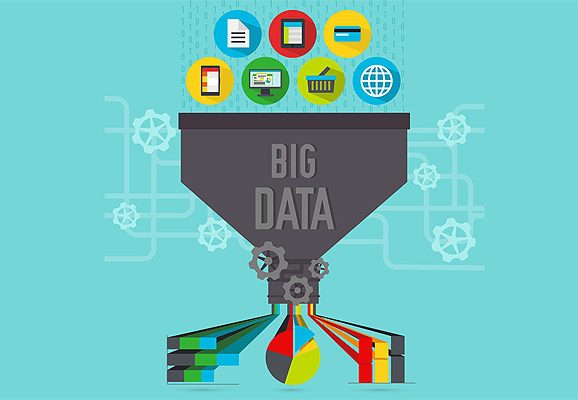Retailers are constantly looking for the best strategies and technologies to help them understand consumers’ purchase journeys. But as consumers’ expectations of the shopping experience become more demanding, retailers are turning to business intelligence (BI) solutions designed to analyze and report on information gathered from previous interactions. Using BI solutions, retailers can use relevant data to make more informed decisions that can help deliver long-term business success.
With the need to address Big Data pervading through all technology-reliant industries, retailers must take great care to understand the concepts and practical uses for BI and analytics solutions. SAS defines Big Data as “the exponential growth and availability of data, both structured and unstructured,” indicating that as the data pool gets larger, more measures must be taken to make it useful for business purposes.
Big Data Takes Center Stage
A large part of modern business intelligence revolves around understanding Big Data. It appears that this understanding is gaining traction throughout the retail industry, with more merchants utilizing systems capable of monitoring and reporting on this data.
Advertisement
In fact, 54% of retailers say that using data tools seriously boosted 2014 revenues by helping them make smarter product buying decisions, according to the 2016 Retail Technology Adoption Report from Lightspeed. Another 26% of retailers plan to add data analytics capabilities by the end of 2016 in order to make better buying decisions.
The Lightspeed report indicated that retailers aren’t only using data analytics solutions for buying. They also are slowly adapting them to drive more personalized marketing campaigns. While 22% of retailers say they currently use data for personalized marketing, another 35% plan to implement it by the end of 2015. At least 18% of these retailers even predict they will use data for personalization as the top driver of increased revenue.
“For us, we’re looking at what data is helpful for our business and see where we can use that data to drive smarter decisions,” said Jon Kinder, Business Intelligence Analyst at RetailMeNot. “We’ve used that data to garner how we’re approaching everything on our site, such as all the different ads we’re getting on the site, all the different offers we’re putting on it, as well as our newsletter strategy. Going into the holiday season, we can identify pretty early on what types of retailers are probably going to have a lot of searches, what kind of offers will do well for them and the best ways to connect them to the users.”
How Can Retailers Leverage BI Solutions?
Beyond product buying and personalization, retailers can leverage BI solutions for numerous functions. Business and analytics platform provider Tableau Software reported that as many as 23.9% of retailers use data analytics platforms to provide better customer service, representing the highest priority among retailers surveyed. Other priority reasons include reducing costs (13.9%), an improved supply chain (11.9%), improved ROI (7.1%) and improved staff resource management (7.1%).
“Retailers are under more pressure to increase sales and reduce costs,” said Jeff Huckaby, Market Segment Director at Tableau Software, “The product was always the center of everything and the belief was that the supply chain, the customer and marketing all revolved around that product. If you had a great product and a great price and you put it in front of people, they would buy it. Now, today’s omnichannel environment flips that and puts the customer into the center, where they should have always been.”
In one example of a retailer using BI optimization for better customer service, Tesco is leveraging Tableau to incorporate weather information into its store operations, so that the retailer can predict effects of weather on sales and adjust its supply chain accordingly.
“If Tesco knows a specific store is entering a weekend where it’s going to be very hot, and they know their customers like to barbecue, then they can go and reset their store to accommodate that,” Huckaby stated.
Fostering Better Communications
Kinder, of RetailMeNot, pointed out that data reporting through Tableau is important for improving communication between the company and its stakeholders. In sharing visualized data analysis with the stakeholders, the marketplace can discover opportunities and discrepancies that the company as a whole can improve on. RetailMeNot has measured metrics to understand historical trends, such as how long, and when, visitors look at the site and the app.
“We can monitor our properties and figure out what offers are best for the shopping that consumers are about to do, or are currently doing,” Kinder explained. “We can contrast that with current coupons and offers that we have from retailers. We are ready for the holiday season, but we don’t always see the same content from our retail partners right away. Now we can go to our retailers with the conversation: ‘I know you’re ramping up for the holiday season too, but you need content now. With that we need really good coupons and offers on the site to drive the traffic to you.’”
Business Challenges And Inhibitors
Applying relevant business intelligence practices can come with challenges, especially as retailers rapidly play “catch up” with consumers. Understanding these consumers remains the key to analyzing and reporting on data correctly.
RSR reports that the top business challenges in expanding the use of BI and analytics solutions remain largely consumer-related. The top three business challenges for retailers, according to the 2015 report, titled: Advanced Analytics: Retailers Fixate On The Consumer, include:
-
Needing to understand consumers’ paths to purchase (58%);
-
Sudden changes in consumer trends and demand, and the need to react more quickly (51%); and
-
Competitors using customer information as a competitive tool to win more wallet share (46%).
When it comes to making better use of BI and analytics solutions, it appears that these retailers have a few organizational inhibitors that prevent them from implementing the technology necessary. The top three inhibitors include:
-
Extracting the data from operating systems (39%);
-
Budgetary constraints (37%); and
-
Having a limited understanding of how to use non-transactional data from digital sources (30%).
The top inhibitor shows that more often than not, retailers have more than enough data to analyze both their internal functions as well as their customer interactions. The challenges occur when retailers are struggling to manage different types of data, such as structured data that can be stored in a fixed database (credit card information, GPS data, sale location and product information), or unstructured data that isn’t organized in a pre-defined matter (audio files, text files, videos, images and social media posts).
“Retailers have all these applications: web applications, call center applications, marketing automation applications, and there is data that is locked up in these silos,” said Jakki Geiger, Senior Director of Information Quality Solutions Marketing at Informatica. “When you want to stitch it all together, see the big picture and understand the relationships and connections between that data, it can all break down. These companies need to bridge those data silos in order to be able to answer fundamental business questions.”
Contextualizing Big Data To Make It Actionable
With so much data available originating from numerous siloed systems, retailers must evaluate what kind of BI solution they need if they want to power through these barriers and optimize their ROI. RSR recommends that retailers implement a purpose-built data warehouse with built-in and discoverable analytics to properly contextualize Big Data, as opposed to leveraging reporting functions that are built into a legacy operational system.
Michael Day, CMO for Retail at Teradata, encourages retailers to dedicate a comprehensive leadership plan designed to both implement an appropriate solution and prioritize the importance of BI-related projects.
“Retailers, more than ever before, need a strategy for how and where they store data, and how to make it available for both old and new types of analytics,” Day said. “You just can’t have data all over the place and expect to leverage that data and focus it to where it needs to be to get the job done.”
Organizing and bringing a clear meaning to this data is a major step toward making it actionable for practical business use.
“For a lot of time, people were getting hung up on the data discovery process, but first and foremost the data has to be actionable,” Day explained. “It’s data science, but it’s not rocket science. Data-driven retail is here to stay and it is going to be mainstream.”
With BI solutions systems becoming more sophisticated, retailers have more options to choose from, and are equipped with better opportunities to educate themselves on the topic. However, these businesses would serve themselves well to do everything they can to find the solution that specifically fits their needs, especially if there is potential undiscovered data they can find — particularly unstructured data.
“You can visualize messy data, and it’s not going to help you make any decisions or figure out the next best action,” Geiger concluded. “But if you visualize data that you know you can trust, which has good quality customer, product and location information, you can probably come up with some great insights and actions for your next decision, or the next interaction with that customer.”









